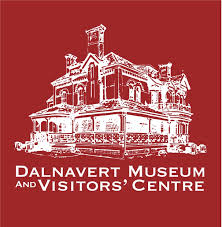by Alora Hayward
What do you think of when you think of feminism? Women supporting women, women supporting everyone; marching through the streets, shouting “My body! My choice!” - empowerment, inclusion, awareness, protests, equality. All of these come to mind in relation to the word feminism. But where did the term originate? Who was the quote on quote “first feminist?” One might argue that Mary Wollstencraft was the world’s first feminist, others might say Florence Nightingale. The term “feminism” is defined by the Oxford English Dictionary as: “Advocacy of equality of the sexes and the establishment of the political, social, and economic rights of the female sex; the movement associated with this.” But before there was Feminism, there was The New Woman.
The New Woman - capital N, capital W- was a Victorian Era concept that originated in the 1890s. But before we can dive into the New Woman, we must first look at the origins of The Woman Question. The Woman Question was widely debated throughout the Victorian Era, questions of marriage, women’s rights, professional opportunities, and sexual/social liberation (Utell 1). Francis Parkman writes from a male perspective on The Woman Question, “The ideal woman is a very noble creature.” In other words, the woman is meant to be honorable. She was meant to be wife and mother, chaste, and pure. What then happens when a woman becomes fed up, during this time? What happens when she decides to go out of the home, or rather, not marry at all? She becomes The New Woman.
So, who was The New Woman? What was her role within Victorian Society? The New Woman was “…by turns…anti-maternal…she was male-identified, or manhating and/or man-eating…she was anti-domestic, or she sought to make domestic values prevail; she was radical, socialist or revolutionary, or she was reactionary and conservative, she was the agent of social and/racial regeneration, or a symptom and agent of decline” (Lynn Pyckett xii).
While Pyckett defines the New Woman as being “man-hating” the part of this definition most intriguing is “radical, socialist [and] revolutionary.” The New Woman defines societal normalities by not conforming to the traditional roles of women. Sarah Grand - who coined the term New Woman in 1894 - notes in her article how “women were awakening from their long apathy…” Meaning that in a sense, women were realizing that they were more than simply to remain in the household, and help to take care of the children. While this is all well and good, some women wanted to do more, oftentimes, this meant that she wanted to work, and - to the shock of society - remain unmarried. Some New Women still did marry though, take our own Isabella “Daisy” Macdonald.
Daisy Macdonald
Daisy married, and became Isabella Gainsford; this might seem like she was not quite a New Woman, but remember, some New Women within society still married, while upholding their independence. She had hobbies, such as taking care of her pet bird, as well as fencing. Fencing is the art of sword-fighting. Quite popular within the Seventeenth-to-Nineteenth-Centuries. Daisy was also into pistol shooting which is quite unconventional for a Victorian woman. In her own way, she was a New Woman in her own way, she both held traditional Victorian values, while, once again, maintaining her own sense of independence, hobbies, and interests.
As Grand concludes, “Mirrors may be either a distortion or a flattering medium, but women do not care to see life any longer in glass darkly…Let there be light.”
Learn more about the New Woman on our Spinsters and Suffragists Tours, running all March long in celebration of Women’s History Month.
Works Cited
DuBois, Ellen. “The Radicalism of the Woman Suffrage Movement: Notes toward the Reconstruction of Nineteenth-Century Feminism.” Feminist Studies, vol. 3, no. 1/2, 1975, pp. 63–71. JSTOR. Accessed 27 July 2023.
Grand, Sarah. “The New Aspect of the Woman Question.” The North American Review, vol. 158, no. 448, 1894, pp. 270–76. JSTOR. Accessed 27 July 2023.
O'Gorman, Francis. The Victorian Novel : A Guide to Criticism, John Wiley & Sons, Incorporated, 2002. ProQuest Ebook Central, Accessed 27 July 2023.
Ouida. “The New Woman.” The North American Review, vol. 158, no. 450, 1894, pp. 610–19. JSTOR. Accessed 27 July 2023.
Utell, Janine. “The Woman Question” Modernist Journal Project. Accessed 2 August 2023.

